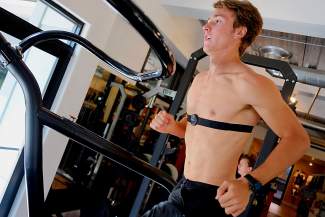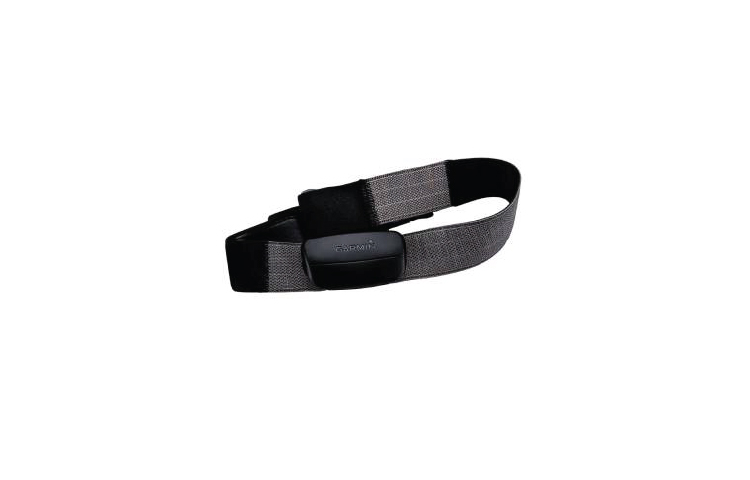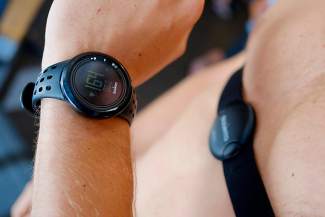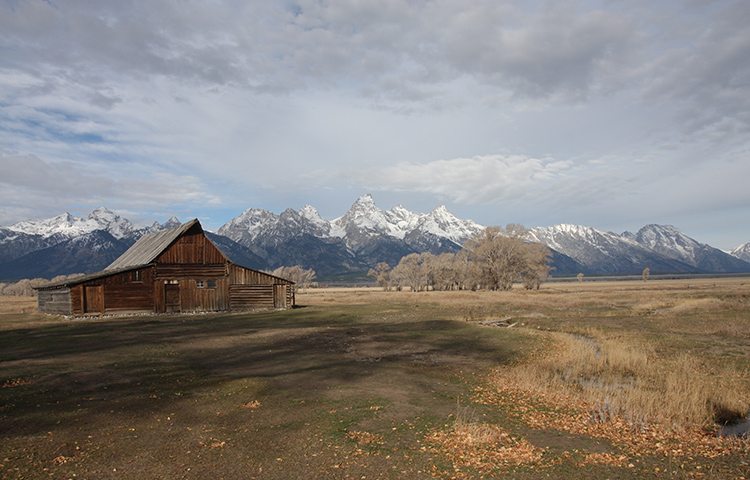By Kim Fuller Published in the Vail Daily
After a summer morning trail run through the aspens on a Vail Mountain singletrack, Ellen Miller asked participants if they stayed at a “gossip pace.” Miller’s Thursday morning outdoor endurance classes, held through the Vail Vitality Center, are designed to help athletes improve their performance sustainability — focusing on longevity over speed — which is generally attained by staying at a conversational pace in heart rate (pitter-patter) zone two.
Get your gadget
If you have never had a heart rate monitor, athlete and coach Ellen Miller suggests starting simple. She said sometimes less is more, and older clients may want to get a simple heart rate monitor with big numbers on the display for quality visual interaction.
Some tech-savvy athletes may want to combine their heart rate monitor with all-encompassing fitness gadgets from companies like Nike and Garmin to get a full spectrum of information about their fitness, she said.
Triathlete Josiah Middaugh said his favorite device is the Suunto Ambit Black, which he called a “do-everything watch.” It has a GPS, and can be used on a bike to measure speed and power, while running for pace and distance, and it gives the athletes a heart rate at all times.
The Polar Loop is a waterproof bracelet that tracks daily activity and exercise levels, monitors sleep patterns and provides alerts for individualized goal setting. This device has the ability to track five different levels of activity intensity using heart rate, helping the athlete adapt his or her goals accordingly. The bracelet alerts the user, via phone, when he or she has been sitting down too long.
Garmin’s Soft Strap Premium Heart Rate Monitor is worn around the chest during an activity, and it wirelessly transmits the user’s heart rate to a compatible device — watch, iPhone with adapter, bike computer — for instant feedback. The plastic heart rate module is removable from the strap so the strap can be washed as needed.
“I think for the average fitness enthusiast, a heart rate monitor gives that person, that athlete, a glimpse of what may be going on inside of them that they may not be able to sense or detect themselves,” said Miller, athlete and Vitality Center endurance coach. “Whether that is an effort level or a recovery, the heart rate monitor will tell you.”

Cal Deline runs on a treadmill while training for Nordic skiing at Dogma Athletica in Edwards on Monday. He uses a heart rate monitor to gauge how hard he is working.
FEEL THE BEATS
Josiah Middaugh, professional triathlete and coach at Dogma Athletica in Edwards, said heart rate training is a way to have an objective measure of your output. But the numbers on the monitor, along with what they mean, he said, are very individual.
Max heart rates have no correlation to your fitness level, Middaugh explains. What does matter is how a heart rate number during exercise is matched up with the workload and how an individual is handling that work.
“That’s the big thing that separates athletes at different levels — what they are doing at those heart rates,” he said.
One way to get familiar with your heart rate zones and overall fitness is to find a rating of perceived exertion, known as an RPE.
“RPE can be used by matching it up with heart rate to get to know your own body,” Middaugh said. “Even without knowing the physiology of it, it can really teach you a lot about your body, so you know what it feels like to be at a certain heart rate for a certain amount of time.”
RPE is based on the physical sensation a person experiences during physical activity. On a one to 20 RPE scale, an athlete’s perceived exertion rating is multiplied by 10 to get an average heart rate range. On the scale, the number six represents no exertion at all, nine corresponds to very light exercise (a healthy person walking slowly for a short period), 13 is somewhat hard exercise (taxing but sustainable activity), 17 is very hard and very strenuous (requires pushing through physical challenge to keep going), 19 is an extremely strenuous exercise level (for most people this is the hardest exertion they have ever experienced).
So, if an athlete’s RPE is 12 (fast-paced walk for most), multiplied by 10, then the average heart rate range for this RPE is 120 beats per minute. While heart rate numbers are very individual, the more a person gets to know his or her own RPE and corresponding heart rates, continued cardio exercise will then help this person to see an improvement in his or her own power, speed and sustainability at those numbers, as well as a more efficient recovery time.
“The important thing is what you can do at those heart rates, not necessarily those numbers changing,” Middaugh said. “Be really careful not to compare your numbers to other people’s heart rate monitors.”
GET IN THE ZONES
Just like the heart rate numbers themselves, the heart rate zones themselves are also individual. Zones are used as a training tool to help moderate how much exertion is given throughout various blocks of workout. How many workouts per week in zone two, zone three and zone four, for example.
“People’s hearts are as different as our eyes, our ears, our faces; some are big, some are little. The only true way to define those heart rate zones is though physiological testing,” Miller said.
The Vitality Center in Vail offers this type of testing, and Middaugh said Dogma often uses a 20-minute time trial on a bike to find average power and heart rate. He also said that field tests, along with physiological tests, are the best way to determine your zones.
“I definitely believe in training at all different intensity levels,” Middaugh said. “But there are places where I spend more time.”
There are a lot of different kinds of heart rate zone charts, but Middaugh uses the following methodology:
Zone one: Recovery
Zone two: Endurance
Zone three: Tempo
Zone four: Threshold
Zone five: VO2 max interval
“People talk about the threshold heart rate zone — anaerobic is above that, and aerobic is below that,” he said. “An aerobic heart rate zone — conversational pace, but still working — might be 20 beats below the threshold heart rate. I would call that zone two, where I spend a lot of my time.”
So, for Middaugh, zones one, two and three are aerobic, zone three is just below the threshold, zone four is just above the threshold (race pace, he said) and zone five is for shorter, one-to-three minute intervals.
For the average athlete, Middaugh recommended starting with a lot of time in zone two, until speed and power are improved at the same heart rates. Then, he said, start to sprinkle in some intensity, longer sustained intervals, approaching race pace at zones three and four. Reserve the zone five, VO2 max levels for one or two interval sessions per week or just before races.
Kim Fuller is a freelance writer based in Vail. Email comments about this story to cschnell@vaildaily.com.











Leave a Reply
You must be logged in to post a comment.